Craig Green’s craft works
Simply sign up to the Style myFT Digest -- delivered directly to your inbox.
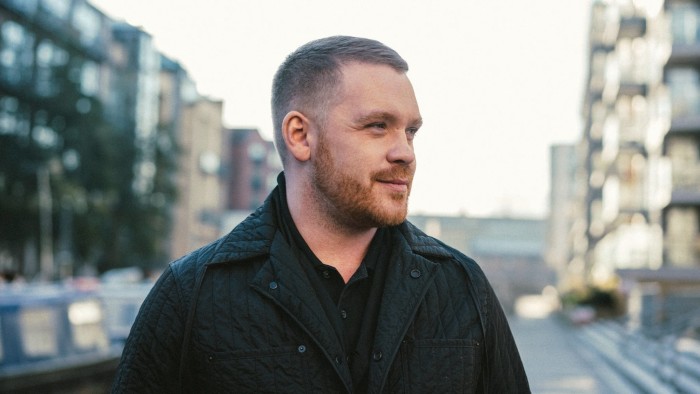
When Craig Green was at school he dreamt of being a sculptor or a painter. Asked about his ambitions today, he says that if he weren’t in fashion, he’d be making ceramics. It’s a telling set of aspirations for a British menswear designer who’s known for creating clothes which are often woven, stitched, folded or tied to the wearer, much like a sculpture. Even when presenting simple, streamlined workwear, Green indulges his sculptural side by bringing three-dimensional elements into his catwalk presentations and campaigns. His runway shows are often weird but beguiling displays where you’ll find models bearing their own neoprene neon silhouettes; obscured by surreal wood and jersey constructions akin to portable confessionals; transformed into “human tents”; or walking canvases for solidified tie-dye “explosions”.
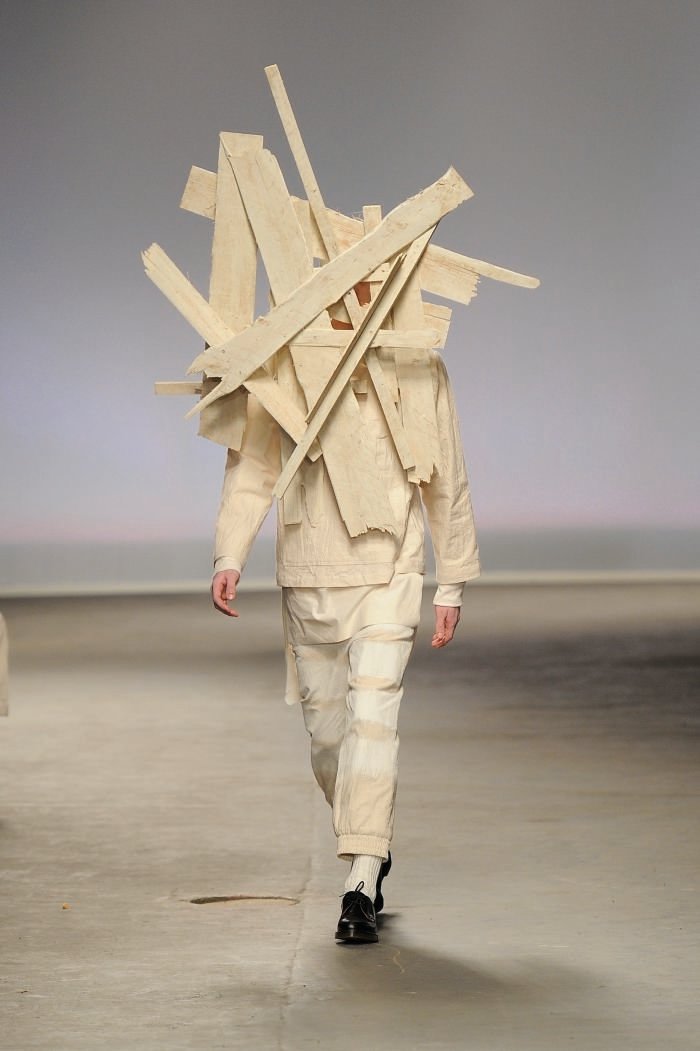
Largely handmade, these set pieces have been a tangible way for Green to formulate his more esoteric ideas ever since he launched his namesake label seven years ago. But as highfalutin and academic as it all sounds, Green’s starting point is often surprisingly everyday: for his debut menswear show in London in 2013, he built human sculptures fashioned from B&Q fence panels that were deliberately smashed up and then painstakingly reassembled. The idea evolved from a sketch of a model whose face he’d absent-mindedly scribbled out, and a corresponding desire to make his scrawl “walk” the runway. It was a collection that drew equal amounts of acclaim and derision (mostly from the Daily Mail who sent journalist Richard Dennen around London in mock “plank” fashions), but set Green on the path to commercial and creative success: he’s thrice collected the Fashion Awards’ British Menswear Designer of the Year, in addition to winning Emerging Menswear Designer in 2014. His clothes are worn by celebrities suggestive of a new and desirable kind of masculinity like Jared Leto and Kendrick Lamar.
“I’ve always been good at making things,” says the 33-year-old designer, when asked to distil his relationship with sculpture. “Growing up, we were constantly doing arts and crafts at home and I still love all that kind of stuff.” The son of a plumber and a nurse, Green was the first in his family to go to university, and spent his childhood sand painting and marbling (though he did, he attests, have a gaming phase too). Not that much has changed. He lives a just few streets from his mum’s house in Hendon, north London, and his small team is collectively defined by its hands-on ethos. “It’s a very physical studio,” says the designer, his own strong hands adorned with a black signet ring. “There’s lots of cutting and sewing and making. Everyone is a maker and a doer.”
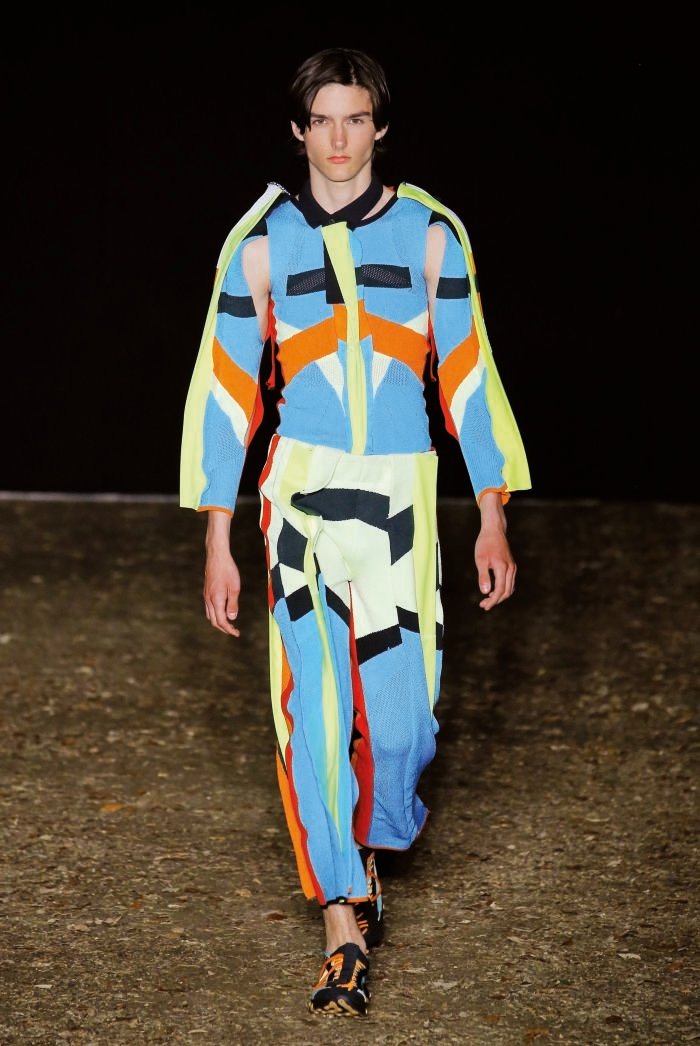
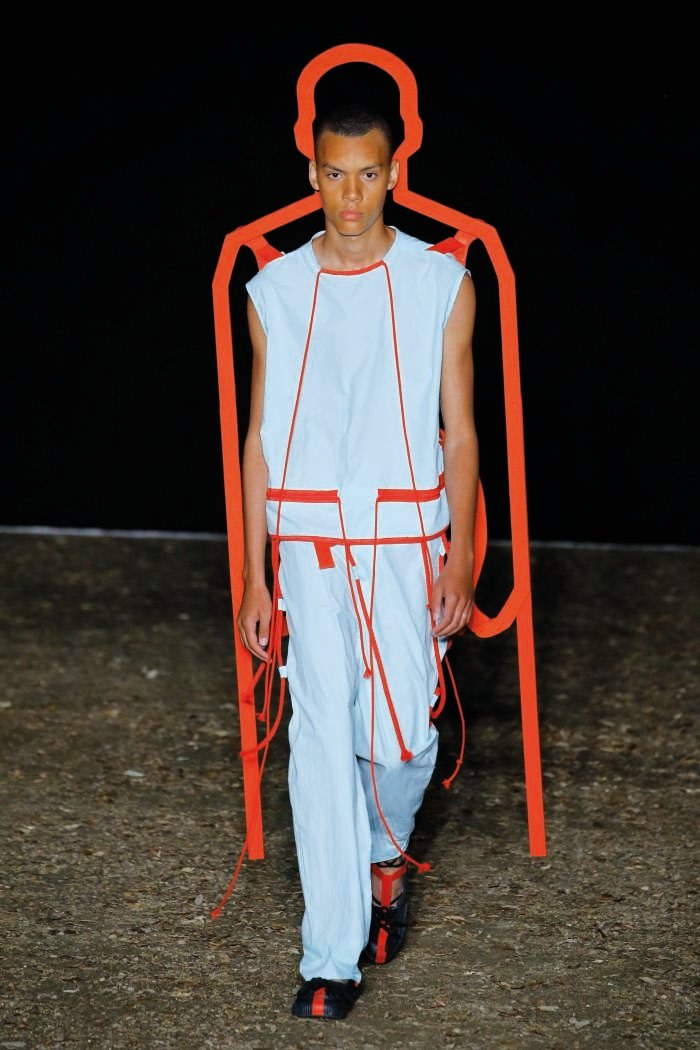
Last year, when Andrew Bolton, the head curator of the Metropolitan Museum of Art’s Costume Institute in New York, commissioned Green to create an entire wall’s worth of painterly cloth panels to accompany his ecclesiastical garments for “Heavenly Bodies: Fashion and the Catholic Imagination” at the Cloisters, the task consumed his entire team. “The whole studio was on hand-painting lockdown for months,” says Green of the laborious process of decorating the linen fabrics to mimic the markings of everything from Rorschach tests to Turkish tiles to Persian carpets to Portuguese ceramics.
Never one to limit his inspirations, Green’s conceptual collections are typically a visual feast of artistic references – a skill that he masterfully honed while on placement from Central Saint Martins with the Antwerp designer Walter Van Beirendonck. “He made me realise that fashion can come from anywhere and be about anything,” says Green, who between binge-watching Dawson’s Creek immersed himself in books on masks and tribal dress and chairs at Beirendonck’s vast studio library.
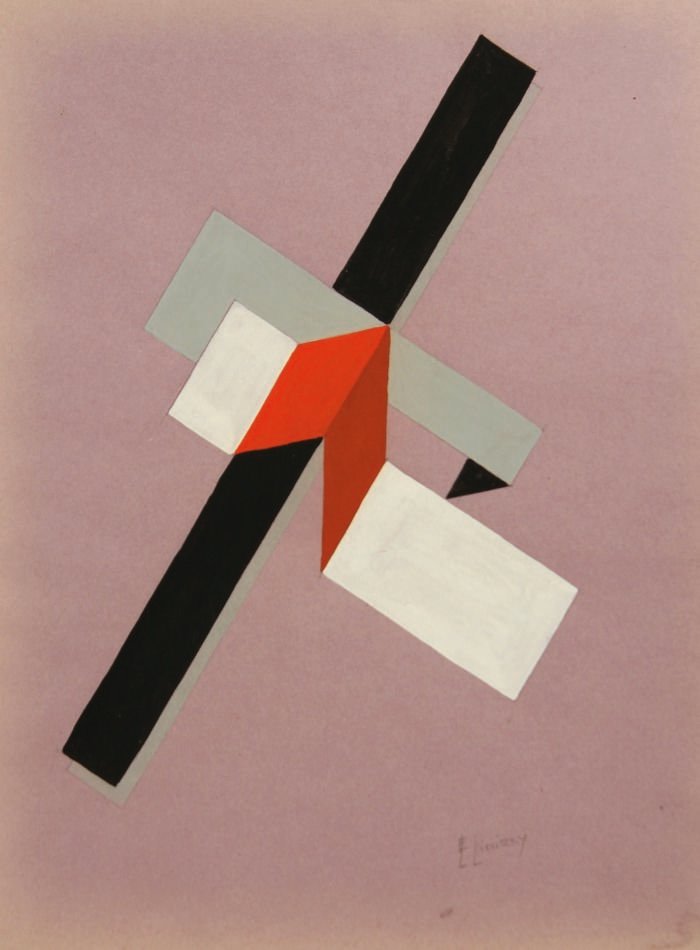
Green has long admired the fleshy realism of Lucian Freud and Jenny Saville, whose paintings he pored over in his own portraiture painting phase; while his clothes, with their geometric trompe l’oeil details, recall Russian Constructivist paintings. One of the most memorable exhibitions he’s ever visited was a Tate retrospective of the Swiss artists Fischli & Weiss, who are known for turning commonplace objects into ironic and transcendent sculpture and moving image. Green was captivated by The Way Things Go, a film that follows a series of household items in a chain reaction. “It’s always been about making something out of nothing for me,” says Green of his belief in fashion that’s an elevation of the everyday. “That idea that you can create something that has energy and fantasy out of the ordinary objects around you still captivates me.”
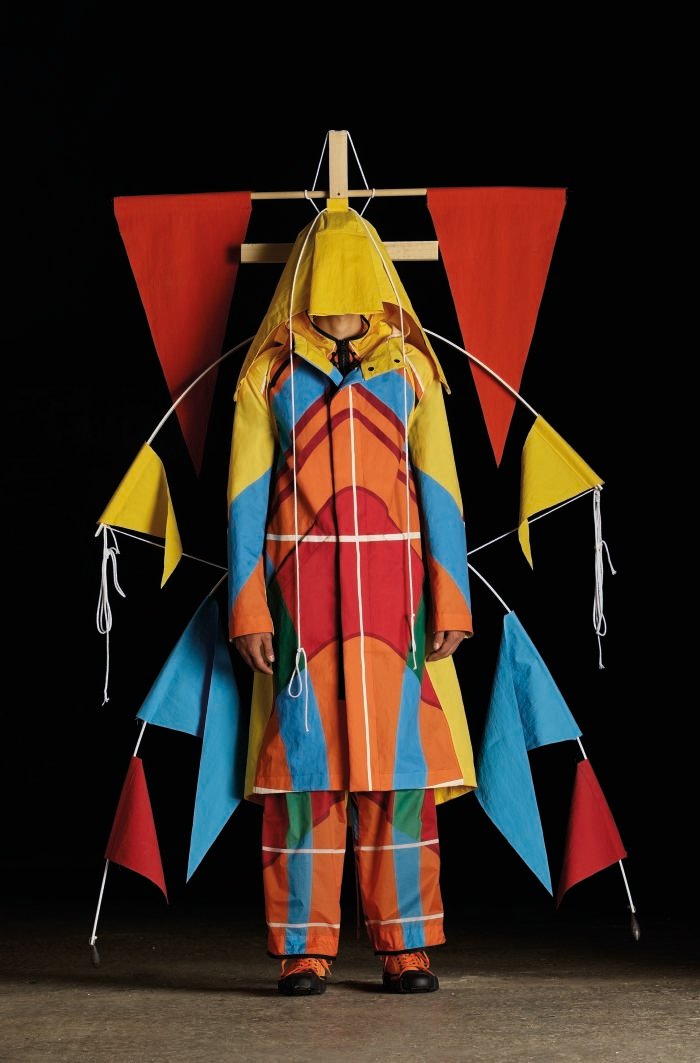
You get the clearest sense of the duo’s influence in Green’s kinetic installations and campaigns for Moncler. (He’s one of nine designers, including Simone Rocha and Pierpaolo Piccioli, to have created biannual capsule collections that reinvent the ski brand’s classic down jacket.) His fantastical SS19 presentation features “halo catapult sculptures” which borrow, by turns, from tents, weather vanes, windsock kites, sunshields and the mobile art of Alexander Calder. They were mechanised with the help of innovative set and spatial designer duo Isabel and Helen, while Green also counts David Curtis-Ring as a long-time collaborator on his show set designs.
The industrial aesthetic of British artist Rachel Whiteread similarly resonates with the designer. “I love how simple her work is, but how powerful. For me it’s about the multitude of ways that you can quantify and fill space,” he says of House, the seminal 1993 work that saw Whiteread cast an East London terraced home earmarked for demolition in concrete – then promptly win the Turner Prize.
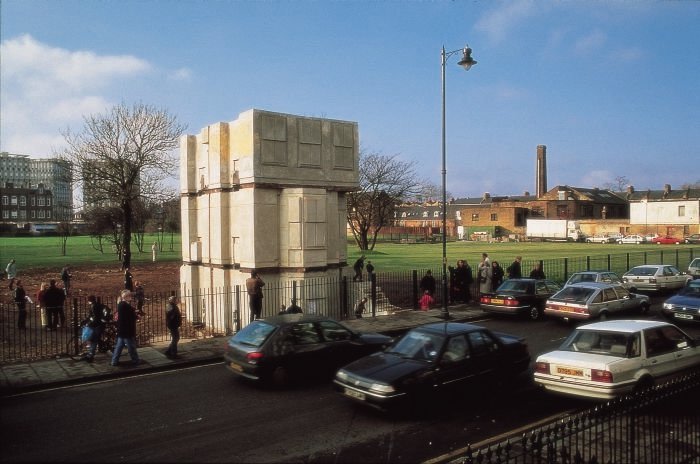
It’s Green’s footwear designs that draw most directly from her spatial forms: “Shoes are like miniature sculptures,” he says, referring to his collaboration with English shoemaker Grenson, which emulates the fresh-from-the-mould look that’s most often associated with plastic dolls, but cast in leather.
Green lent a sculptural slant to the Nike Flyknit, too. Treating the woven fabric like a sculptor’s modelling clay, stretching, pinning and building it straight on to the model’s foot in the Florence factory. “It felt very much like sculpting,” he says of the SS19 collaboration, which involved garments being similarly pulled apart, reworked and modelled directly on the body.
At his most recent menswear show in London in January, Green presented “men of glass” dressed in exotic coloured plastics that were carved and shaped with smocking and crochet to mimic the handcrafted effect of blown glass. These were shown alongside rain parkas with backs clad in tapestry and toile prints that borrowed from an arts and crafts canvas that Green picked up for a fiver at a car boot sale decades ago. “I liked that fact that they look like homewares,” he says of the looks which featured in a collection exploring notions of male strength in fragility. “They could easily be a Ming vase, or made from glass or porcelain.”
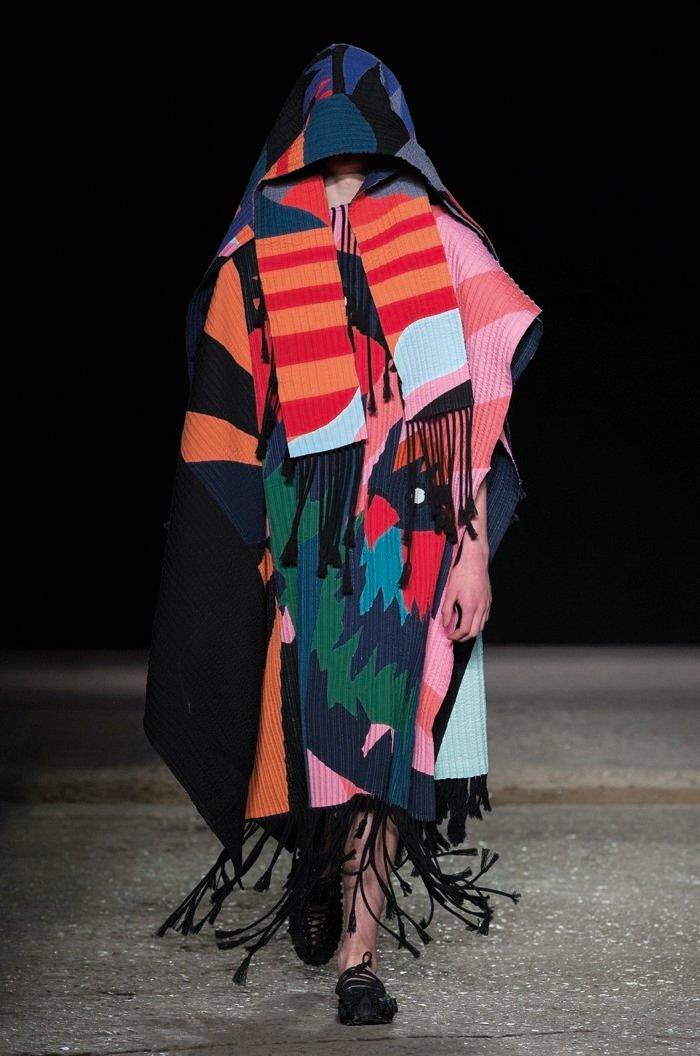
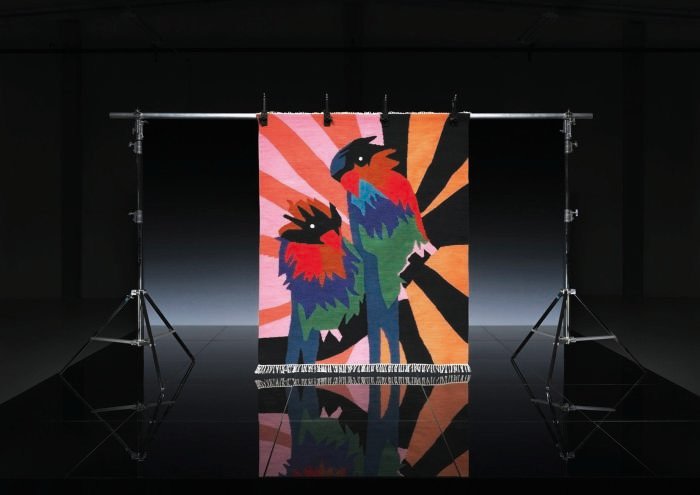
Green is in fact making moves into the world of interiors. This May sees the release of his most recent rug design. Created for Ikea, it’s inscribed with paradisiacal birds that borrow from a jacket in his SS18 collection. He wanted it, he says, to feel like a portal into another realm. And there’s another soon-to-be-disclosed, full-scale homewares line in the works. The egalitarianism of decor appeals to Green: “I like the idea of creating something sculptural and functional that has real purpose,” he says. Though ultimately, for Green, the act of designing is as much about problem solving as it is about artistry. “That’s what I enjoy about fashion over art,” he says with conviction in his clear blue eyes. “There’s always the restrictions of the body and that’s something that never changes.”

Comments